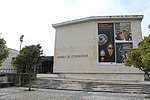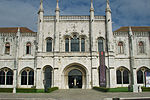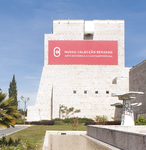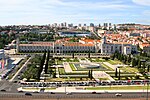Restelo Hermitage
Christian hermitages in PortugalChristianity in LisbonNational monuments in Lisbon DistrictReligious buildings and structures in Lisbon

The Hermitage of Restelo (Portuguese: Ermida de Restelo), alternately Chapel of Saint Jerome (Portuguese: Capela de São Jerónimo), is a hermitage in the civil parish of Santa Maria de Belém, in the municipality of Lisbon. The religious architecture has Manueline and revivalist Neo-manueline elements, consisting of a single-nave structure with a vaulted ceiling and surrounded by a modernist landscape, as evidenced by a preoccupation with choice of plants and manicured environment (completed by Gonçalo Ribeiro), in order to create a zone of protection for the hermitage.
Excerpt from the Wikipedia article Restelo Hermitage (License: CC BY-SA 3.0, Authors, Images).Restelo Hermitage
Praça de Itália, Lisbon Belém (Belém)
Geographical coordinates (GPS) Address Phone number Website External links Nearby Places Show on map
Geographical coordinates (GPS)
| Latitude | Longitude |
|---|---|
| N 38.701333333333 ° | E -9.2137083333333 ° |
Address
Capela de São Jerónimo (Ermida do Restelo;Ermida de São Jerónimo)
Praça de Itália
1400-005 Lisbon, Belém (Belém)
Portugal
Open on Google Maps









